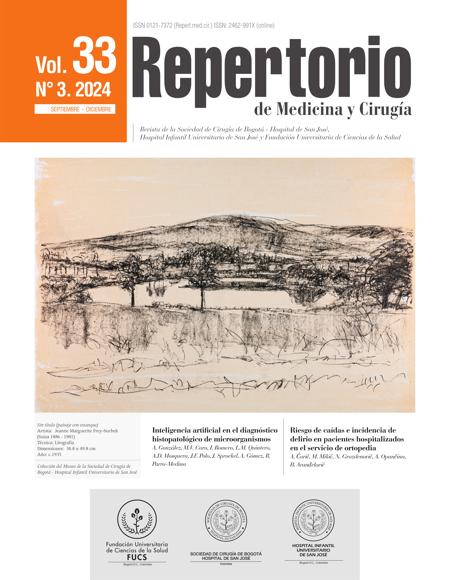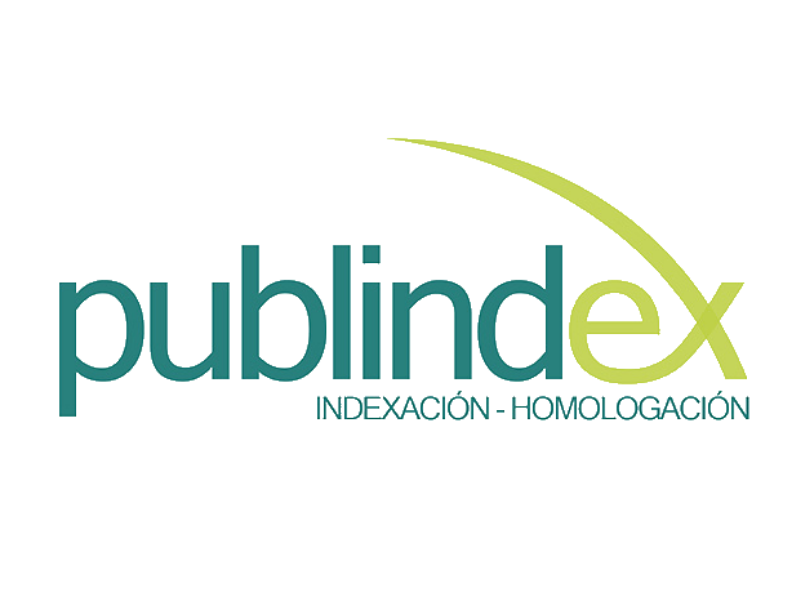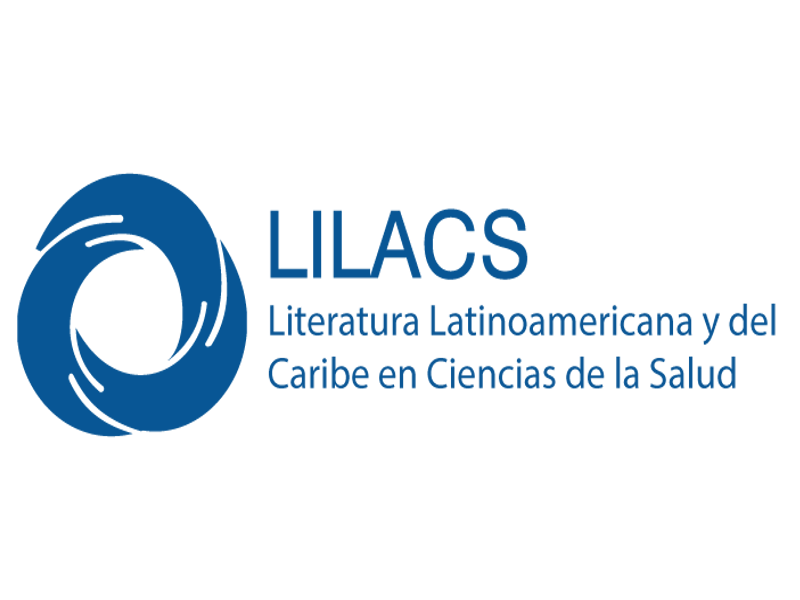Characterization of patients treated for ophidian accidents at The Hospital Regional de la Orinoquía
Caracterización de los pacientes atendidos con accidente ofídico en el Hospital Regional de la Orinoquía
![]()
![]()

Show authors biography
Introduction: an ophidian accident is an intoxication due to snakebite venom inoculation. In Colombia, venomous snakes belong to the Viperidae, Elpidae and Colubridae genus. The bite causes tissue damage and characteristic clinical manifestations, including variable local and systemic pathophysiological alterations. Objective: to characterize patients with ophidian accidents treated at Hospital Regional de la Orinoquia (HORO) of Yopal, Colombia. Materials and methods: an observational, descriptive, cross-sectional, retrospective study, was conducted. All patients with snakebites who attended HORO between January 1, 2014, and May 30, 2020, were included. Results: 571 patients affected by an ophidian accident were identified; 70.1% were males; the minimum age at occurrence was 2 years and the maximum age, 89 years; most cases occurred in 2018 (19.5%). These accidents happened more often when walking along trails (31.2%) and in agricultural activities (29.6%). Bites predominantly involve the lower limbs (70.2%). Conclusions: ophidian accidents are a major public health problem, due to their frequency and outcomes. They are featured by tissue lesions and pathophysiological alterations, which can lead to critical illness and death.
Article visits 439 | PDF visits 659
Downloads
- Rojas Bárcenas AM, Equipo ETV- Zoonosis, Grupo Transmisibles, Subdirección de Prevención, Vigilancia y Control en Salud Pública, Dirección de Vigilancia y Análisis del Riesgo en Salud Pública Informe de evento accidente ofídico, Colombia, 2018. [Internet]. Colombia: Instituto Nacional de Salud; 2019 [citado 2022 jul 3]; Available from: https://www.ins.gov.co/buscador-eventos/Informesdeevento/ACCIDENTE%20OF%C3%8DDICO_2018.pdf
- Vélez ID. El drama de las enfermedades tropicales desatendidas. Biomédica. 2018;38(Sup2):5-7. https://doi.org/10.7705/biomedica.4675 DOI: https://doi.org/10.7705/biomedica.v38i0.4419
- Diaz Córdoba JA., Jaramillo Orjuela V. Incidencia y descripción geográfica de accidentes ofídicos en Colombia reportados al Sistema nacional de Vigilancia en Salud pública SIVIGILA 2014-2016 [Tesis]. Bogotá: Universidad de Ciencias Aplicadas y Ambientales – U.D.C.A. 2019.
- Feitosa ES, Sampaio V, Sachett J, De Castro DB, Noronha M das DN, López Lozano JL, et al. Snakebites as a largely neglected problem in the brazilian amazon: Highlights of the epidemiological trends in the state of amazonas. Rev Soc Bras Med Trop. 2015;48(Suppl I):34–41. https://doi.org/10.1590/0037-8682-0105-2013 DOI: https://doi.org/10.1590/0037-8682-0105-2013
- Manosalva-Sánchez C, Zuleta-Dueñas LP, Castañeda-Porras O. Estudio descriptivo del accidente ofídico, Casanare-Colombia, 2012-2014. MedUNAB. 2018;20(3):338-348. https://doi.org/10.29375/0s1237047.2672 DOI: https://doi.org/10.29375/01237047.2672
- Nina-Cueva O, Olazabal-Chambilla D, Quispe-Arpasi J, Alzamora-Sánchez A, Gomes-Heleno M; Huancahuire-Vega S. Caracterización bioquímica del veneno de la serpiente Bothrops roedingeri Mertens, 1942 y sus actividades edematógena, hemorrágica y miotóxica. Biomédica. 2020;40(4):682-92. https://doi.org/10.7705/biomedica.5228 DOI: https://doi.org/10.7705/biomedica.5228
- Sevilla-Sánchez MJ, Mora-Obando D, Calderón JJ, Guerrero-Vargas JA, Ayerbe-González S. Accidente ofídico en el departamento de Nariño, Colombia: análisis retrospectivo, 2008-2017. Biomedica. 2019;39(4):715-36. https://doi.org/10.7705/biomedica.4830 DOI: https://doi.org/10.7705/biomedica.4830
- Abuabara-Franco E, Rico-Fontalvo J, Leal-Martínez V, Pájaro-Galvis N, Bohórquez Rivero J, Barrios NJ, et al. Lesión renal aguda secundaria a mordedura de serpiente del género bothrops: a propósito de un caso. Rev. Colomb. Nefrol. 2022;9(1):e536. http://dx.doi.org/10.22265/acnef.9.1.536 DOI: https://doi.org/10.22265/acnef.9.1.536
- Cañas CA, Castro-Herrera F, Castaño-Valencia S. Clinical syndromes associated with Viperidae family snake envenomation in southwestern Colombia. Trans R Soc Trop Med Hyg. 2021;115(1):51-56. https://doi.org/10.1093/trstmh/traa08 DOI: https://doi.org/10.1093/trstmh/traa081
- Maguiña-Vargas C, Chincha-Lino O, Vilcapoma-Balbín P, Morante D. Actualización en clínica y terapia de mordedura de serpiente (ofidismo). Rev Med Hered. 2020;31(1):48–55. https://doi.org/10.20453/rmh.v31i1.3729. DOI: https://doi.org/10.20453/rmh.v31i1.3729
- Longbottom J, Shearer FM, Devine M, Alcoba G, Chappuis F, Weiss DJ, et al. Vulnerability to snakebite envenoming: a global mapping of hotspots. Lancet. 2018;392(10148):673–84. https://doi.org/10.1016/S0140-6736(18)31224-8 DOI: https://doi.org/10.1016/S0140-6736(18)31224-8
- Ministerio de Salud y Protección Social. Sistema de Vigilancia en Salud Pública. Colombia [citado 07 de julio 2022]. Disponible: https://www.minsalud.gov.co/salud/paginas/sivigila.aspx#:~:text=El%20Sistema%20de%20Salud%20P%C3%BAblica,pr%C3%A1ctica%20de%20la%20salud%20p%C3%BAblica.
- Coto Freund F, Murillo Barquero F, Rocha Monge SM. Accidente ofídico: Un enfoque al manejo en primer nivel de atención. Rev Medica Sinerg. 2022;7(2):e756. https://doi.org/10.31434/rms.v7i2.756 DOI: https://doi.org/10.31434/rms.v7i2.756
- Sevilla-Sánchez MJ, Mora-Obando D, Calderón JJ, Guerrero-Vargas JA, Ayerbe-González S. Accidente ofídico en el departamento de Nariño, Colombia: análisis retrospectivo, 2008-2017. Biomedica. 2019;39(4):715–736. https://doi.org/10.7705/biomedica.4830 DOI: https://doi.org/10.7705/biomedica.4830
- Cubides Cubillos SD, Alarcón Pérez JC. Accidente ofídico en Antioquia, Colombia: análisis etnobiológico de las construcciones culturales. Revista Etnobiología. 2018;16(2):18-29.
- Rojas-Jaimes JE, Corcuera-Ciudad R, Marcas-Cáceres G. Accidente ofídico fatal por Bothrops atrox en un niño de Ucayali, Perú. Rev CES Med. 2019;33(3):248-253. https://doi.org/10.21615/cesmedicina.33.3.11 DOI: https://doi.org/10.21615/cesmedicina.33.3.11
- Sevilla-Sánchez MJ, Ayerbe-González S, Bolaños-Bolaños E. Aspectos biomédicos y epidemiológicos del accidente ofídico en el departamento del Cauca, Colombia, 2009-2018. Biomedica. 2021;41(2):314–37. https://doi.org/10.7705/biomedica.5853 DOI: https://doi.org/10.7705/biomedica.5853
- Quesada Aguilera JA, Quesada Aguilera E. Prevención y manejo de mordeduras por serpientes. AMC. 2012;16(3):369-383.
- Hurtado Gómez JP, Ruiz Gómez FJ. Prevención y manejo de accidentes por serpientes venenosas en Colombia. Colombia: Instituto Nacional de Salud.
- Miralda Méndez ST. Caracterización clínica del paciente pediátrico atendido por mordedura de serpiente, Hospital Escuela, Tegucigalpa, 2015-2019. Rev Méd Hondur. 2021;89(1):24–8. http://dx.doi.org/10.5377/rmh.v89i1.11720 DOI: https://doi.org/10.5377/rmh.v89i1.11720
- Sarmiento K, Torres I, Guerra M, Ríos C, Zapata C, Suárez F. Epidemiological characterization of ophidian accidents in a Colombian tertiary referral hospital. Retrospective study 2004-2014. Rev Fac Med Univ Nac Colomb. 2018;66(2):153–158. http://dx.doi.org/10.15446/revfacmed.v66n2.61335 DOI: https://doi.org/10.15446/revfacmed.v66n2.61335
- Silva LG, Panziera W, Lessa CAS, Driemeier D. Epidemiological and clinical aspects of ophidian bothropic accidents in dogs. Pesqui Vet Bras. 2018;38(11):2146–2149. https://doi.org/10.1590/1678-5150-PVB-5889 DOI: https://doi.org/10.1590/1678-5150-pvb-5889
- Mora-Obando D, Salazar-Valenzuela D, Pla D, Lomonte B, Guerrero-Vargas JA, Ayerbe S, et al. Venom variation in Bothrops asper lineages from North-Western South America. J Proteomics. 2020;229:19. https://doi.org/10.1016/j.jprot.2020.103945 DOI: https://doi.org/10.1016/j.jprot.2020.103945
- Martínez-Villota VA, Mera-Martínez PF, Portillo-Miño JD. Massive acute ischemic stroke after Bothrops spp. envenomation in southwestern Colombia: Case report and literature review. Biomedica. 2022;42(1):9–17. https://doi.org/10.7705/biomedica.6114. DOI: https://doi.org/10.7705/biomedica.6114
- Gil-Alarcón G, del Sánchez-Villegas MC, Reynoso VH. Tratamiento prehospitalario del accidente ofídico: revisión, actualización y problemática actual. Gaceta Médica de México. 2011;147:195-208.
- Creagh Bandera I, Pérez Ferreiro YD, Gámez Sánchez D, Moreira OD. Características clínico epidemiológicos de los accidentes ofídicos. Ecuador, (2014). IntraMed Journal. 2014;6(1):1-7.
- Guerreo Vargas JA, Rengifo Rios AM, Bueno Ospina ML, Ayerbe González S, Cruz Ordóñez LA. ICTs Use, from an interdisciplinary approach to support the training on ophidism, a public health problem. Rev Ing Univ Medellín. 2021;20(39):13-34. https://doi.org/10.22395/RIUM.V20N39A1 DOI: https://doi.org/10.22395/rium.v20n39a1












